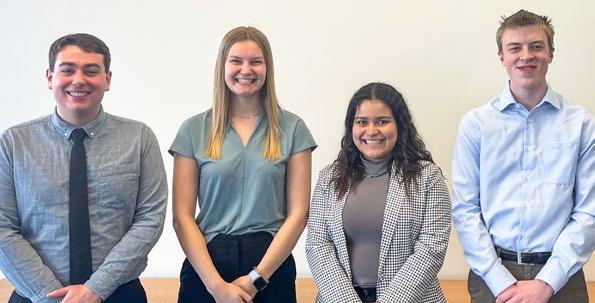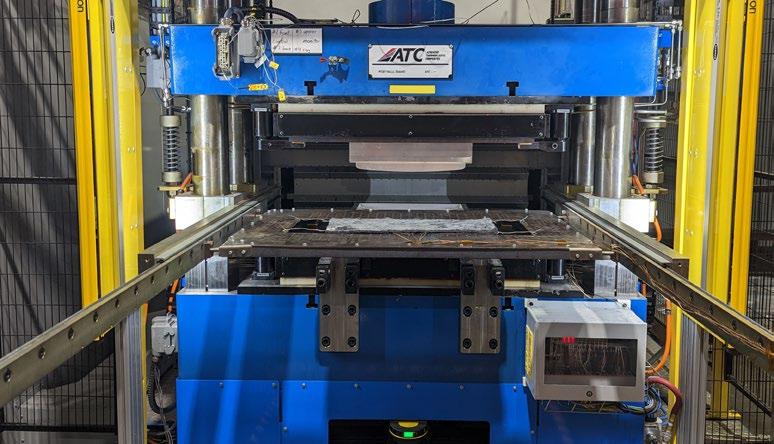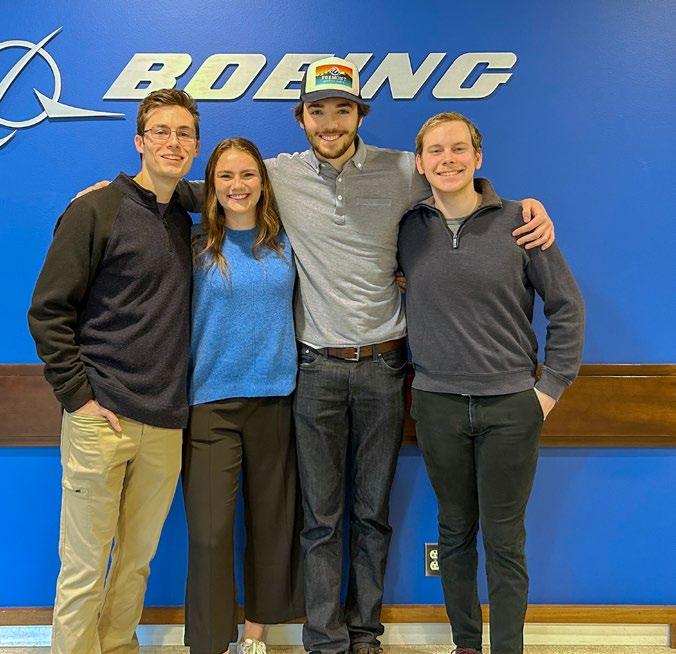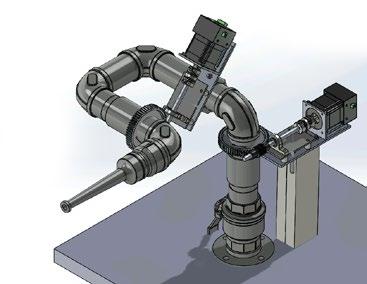
2 minute read
Walking/Working Surface Panels
» Nathan Gerken, Mechanical Engineering
» Molly Peters, Mechanical Engineering
» Zachary Tyree, Mechanical Engineering
» Cameron Wright, Mechanical Engineering
ADVISOR: Brandon Sargent
DAB: Connor Garand
SPONSOR: Boeing
LIAISON: Jose Villarreal III, Don Russell
Team ENSC-57 collaborated with Boeing to identify an alternative material to serve as a temporary walking/working surface panel used to assist in aircraft assembly. The current material in use has been found to be inadequate in the categories of durability, cost, and weight stipulations. ENSC-57 was tasked with researching and testing materials that increase ergonomic efficiency, decrease weight of the panel, and meet all other design requirements established by Boeing. The team narrowed down the list of potential materials through finite element analysis and performed an extensive design process that led to the development of several prototype concepts. After fabricating and running tests on these panel prototypes, the team made revisions to better suit Boeing’s requirements. Based on additional testing results, the team fabricated a final prototype and reported the material recommendation to Boeing.
ENSC-58 | Recycled Thermoplastic Composites
Boeing has been working to decrease their environmental impact by utilizing a fully recycled carbon fiber composite material in their aircraft interiors. This is intended to greatly increase longterm sustainability by reusing material as well as reducing the weight of interior plane panels, thereby increasing fuel economy. Team ENSC-58 worked with ATC manufacturing to stamp form a nonwoven carbon fiber and polymer PEI (Polyetherimide) material into interior aircraft panels. The team evaluated several factors of these new parts to characterize acceptable surface quality for such parts. The final deliverable was a set of qualitative and quantitative grading criteria that Boeing can use to assess future PEI panels. This included acceptance limits for surface roughness and defects common in the stamp forming process.

» Andrew Kelley, Eng. Management (Mech.)
» Nolan Miller, Mechanical Engineering
» Samantha Ward, Eng. Management (Mech.)
» Michael Wiest, Mechanical Engineering
ADVISOR: Jeff Nolting
DAB: Brenna Doll
SPONSOR: Boeing

LIAISON: Jamie Langabeer, Karen Hills, Davis Tran
ENSC-59 | Fire Extinguishing System

» Alexander Delgado, Mechanical Engineering
» Brandon Duff, Mechanical Engineering
» Bryce Eppler, Mechanical Engineering
» Brian Applonie, Mechanical Engineering
ADVISOR: Damon Taam

DAB: Philip Pintor, Gregory McFadden
SPONSOR: Spokane Waste to Energy
LIAISON: Damon Taam
ENSC-59 engaged with Spokane Waste To Energy to create a solution for the ongoing issue of lithiumion fires in their waste holding pit. When fires occur at the facility, the current method of putting them out relies on direct interventions of plant workers or the Spokane Fire Department. Lithium-ion fires, specifically, require unique suppressant applications which differ from historical systems. ENSC-59 was tasked with designing and building a mechanical prototype for an automated fire monitor to combat fires without putting plant worker’s lives or health in danger or requiring the deployment of the fire department. Design and development of the prototype has been the sole focus of ENSC-59 with the final plans including threeinch diameter piping and electronic motors to actuate the monitor. The team then created a physical prototype for testing and application.










